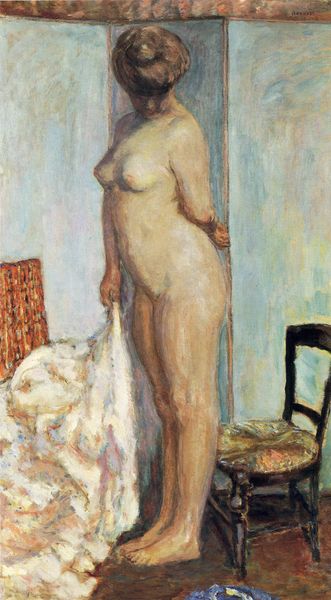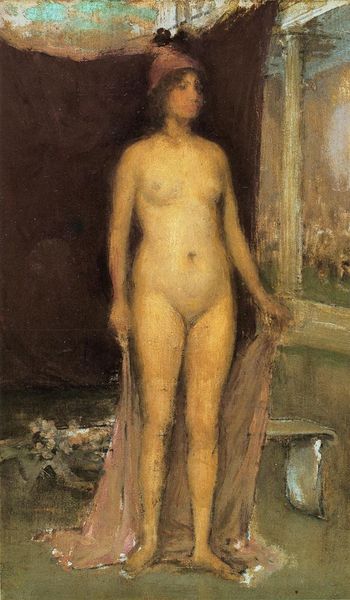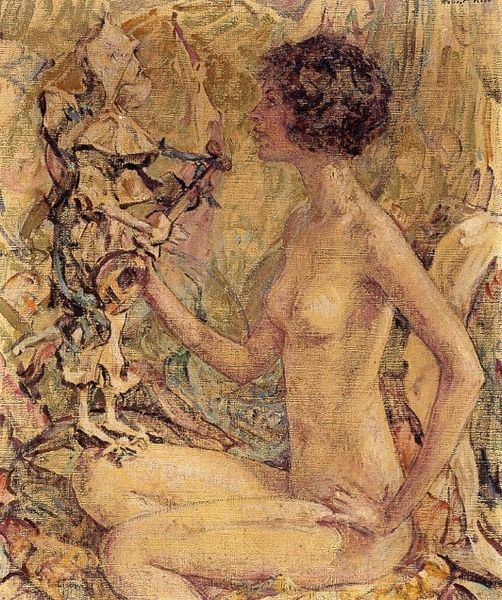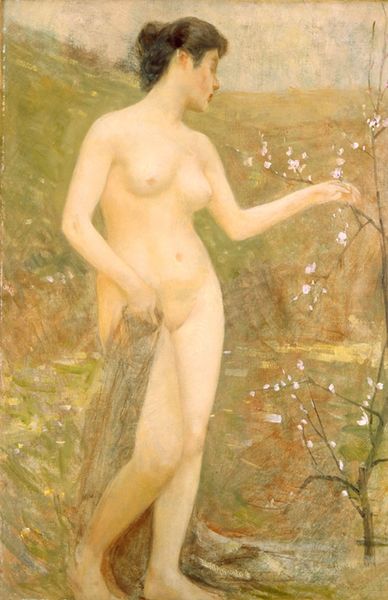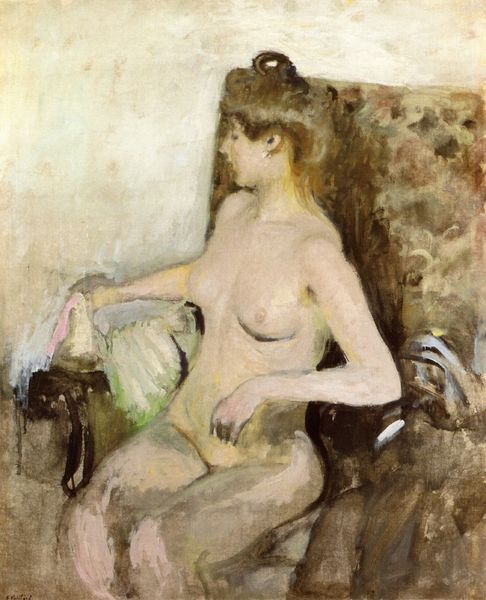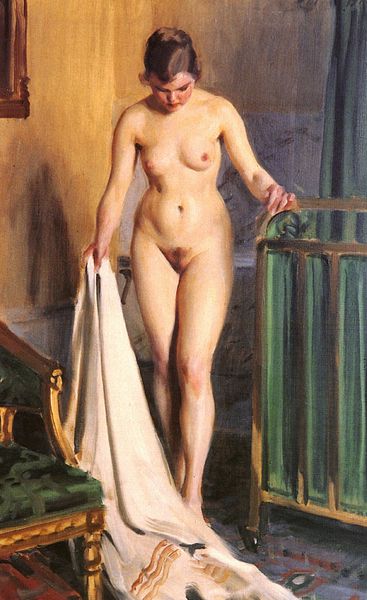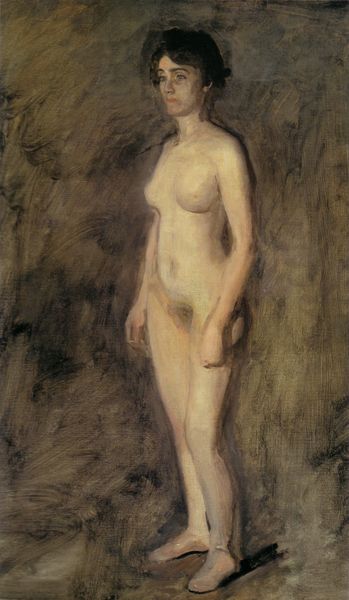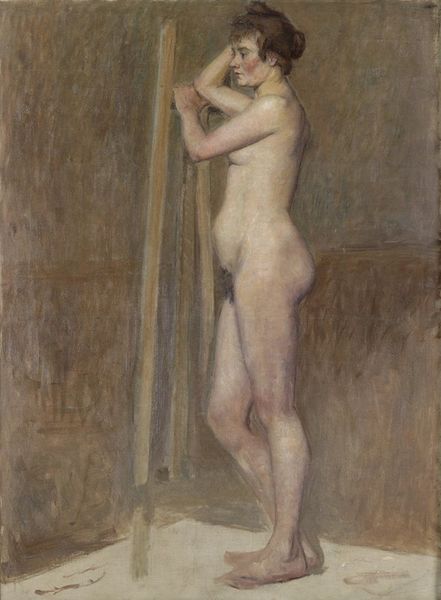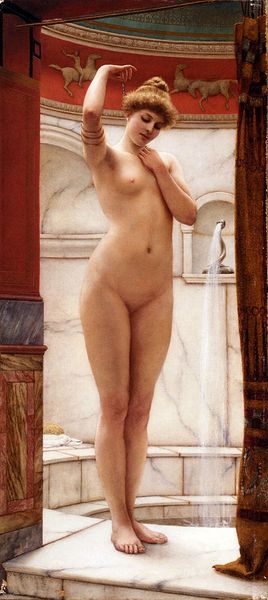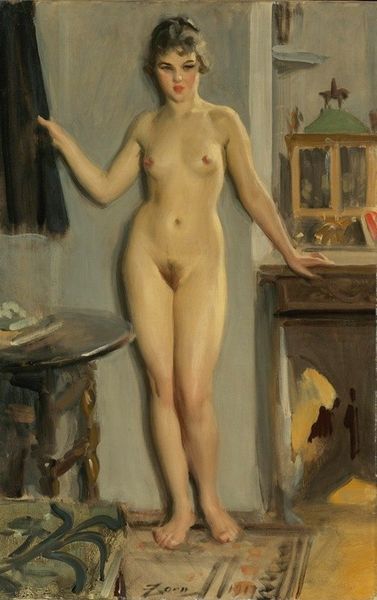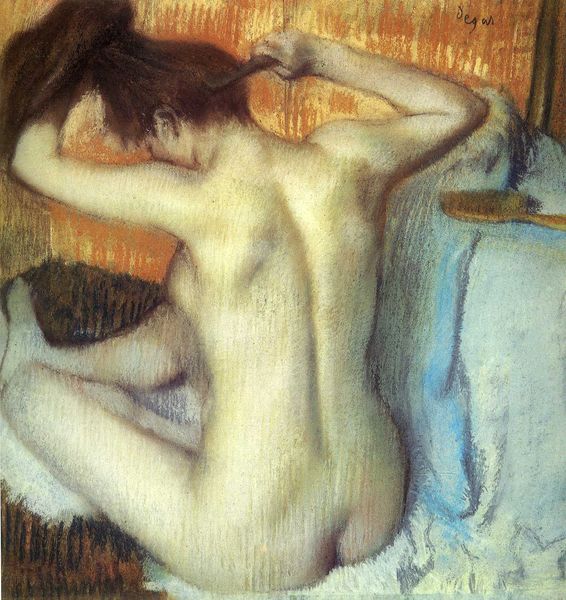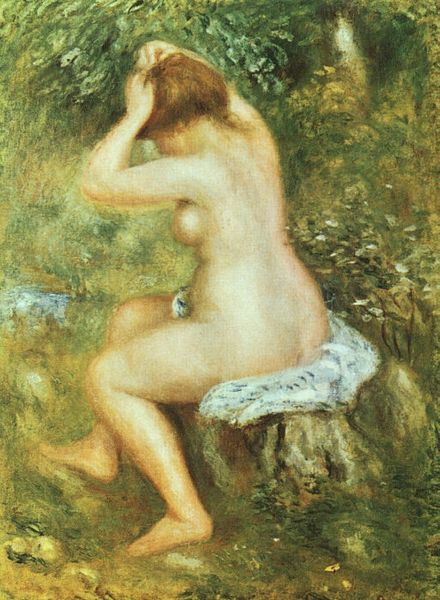
Dimensions: 106 x 71 cm
Copyright: Public domain
Curator: Bonnard's "In the Bathroom," painted in 1907, really pulls you in, doesn't it? I feel almost voyeuristic peering in on this very private moment rendered in oil. Editor: It's almost dreamlike, isn’t it? A warm, intimate glow, the brushstrokes blurring the lines, softening the world around the subject... a reverie interrupted. Curator: Absolutely. There's an undeniable intimacy, part of what’s described as his Intimist style, portraying everyday life, these quiet moments of reflection, especially from women. But do we, perhaps, see a bit too much into these "quiet moments?" There's an interesting relationship between domesticity and objectification that I can't shake. Editor: Exactly. You're stepping into a discourse around the gaze – who is looking and what are they seeing? I wonder about the dynamics of power here. Bonnard’s fascination with the female form, framed within these intensely private spaces…It's about accessibility and the performative nature of gender, what a woman *does* in a bathroom alone versus what we expect. Curator: It makes you consider, right? There’s a tension—between an idealized nude and a lived reality. Her posture isn’t overtly sensual or sexualized, at least not aggressively so, in that classic academic style. She appears… lost in thought. Almost melancholy? Editor: Precisely! Melancholy, uncertainty. Are we as viewers implicated in some violation of privacy by our gaze? What is she considering? The tile design, though gorgeous, is almost a carpet in some rooms… that alone throws this portrait out of sync with accepted norms. It opens a window, a bathroom *window* as a liminal space to explore the artist's feelings about women. Curator: So well said. To the viewer, there is still some element of wanting. Yet despite the title, it’s not about bathing… that much seems clear. Perhaps we should be turning away. Editor: Perhaps so, but like it or not, and much to my discomfort, it captures that uncomfortable truth. It demands critical thought, not just a passive aesthetic appreciation. Art can be discomforting and in those feelings, those internal dialogues, we grow.
